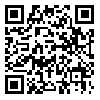Volume 14, Issue 58 (2018)
LIRE 2018, 14(58): 121-145 |
Back to browse issues page
Download citation:
BibTeX | RIS | EndNote | Medlars | ProCite | Reference Manager | RefWorks
Send citation to:



BibTeX | RIS | EndNote | Medlars | ProCite | Reference Manager | RefWorks
Send citation to:
Negari F, Faghih Malekmarzban N. Investigation of the Characterization and the Planes of Point of View in Two Immigration Novels (Ham Navayie Shabaneye Orcestre Choobhâ and Ayenehaye Dardâr) based on Simpson’s Narrative Perspective. LIRE 2018; 14 (58) :121-145
URL: http://lire.modares.ac.ir/article-41-22143-en.html
URL: http://lire.modares.ac.ir/article-41-22143-en.html
Abstract: (7747 Views)
This article aimed to introduce Paul Simpson’s model (2004) at the point of view of "Ayenehaye Dardâr" and "Ham Navayie Shabaneye Orcestre Choobhâ". Simpson applies "sequence, duration, and frequency" in the spatial planes of point of view from "camera angle". He also uses "Modality" in psychology, and "Helidian transitional system" in ideological. Exploring the point of view provides a better understanding of the thoughts and feelings of the characters.
The research method is to evaluate the entire text of the novels in the temporal, spatial, and psychological points of view and identifying the "processes" and "aspects of verbs" in the "policy and beliefs motifs" of the authors’ ideology index.
The flashback in two novels plays an important role. Ghasemi, with a partial view, and Golshiri, with the "here and there" frequency pronouns show the contradiction between the origin and destination community in the lives of immigrants. A confirmative attitude is dominated on novels and the narrator explicitly speaks of his dreams and beliefs. The high frequency of material process reveals realism and reports the specific application of the news, personalities, and lives of the characters.
The research method is to evaluate the entire text of the novels in the temporal, spatial, and psychological points of view and identifying the "processes" and "aspects of verbs" in the "policy and beliefs motifs" of the authors’ ideology index.
The flashback in two novels plays an important role. Ghasemi, with a partial view, and Golshiri, with the "here and there" frequency pronouns show the contradiction between the origin and destination community in the lives of immigrants. A confirmative attitude is dominated on novels and the narrator explicitly speaks of his dreams and beliefs. The high frequency of material process reveals realism and reports the specific application of the news, personalities, and lives of the characters.
Keywords: point of view, Ham navâyie shabaneye orcestre choobhâ, Ayenehaye dardâr, paul Simpson, Migration literature.
Article Type: Original Research |
Subject:
Language and Linguistics
Received: 2016/05/30 | Accepted: 2018/01/21 | Published: 2018/03/18
Received: 2016/05/30 | Accepted: 2018/01/21 | Published: 2018/03/18
| Rights and permissions | |
 |
This work is licensed under a Creative Commons Attribution-NonCommercial 4.0 International License. |








